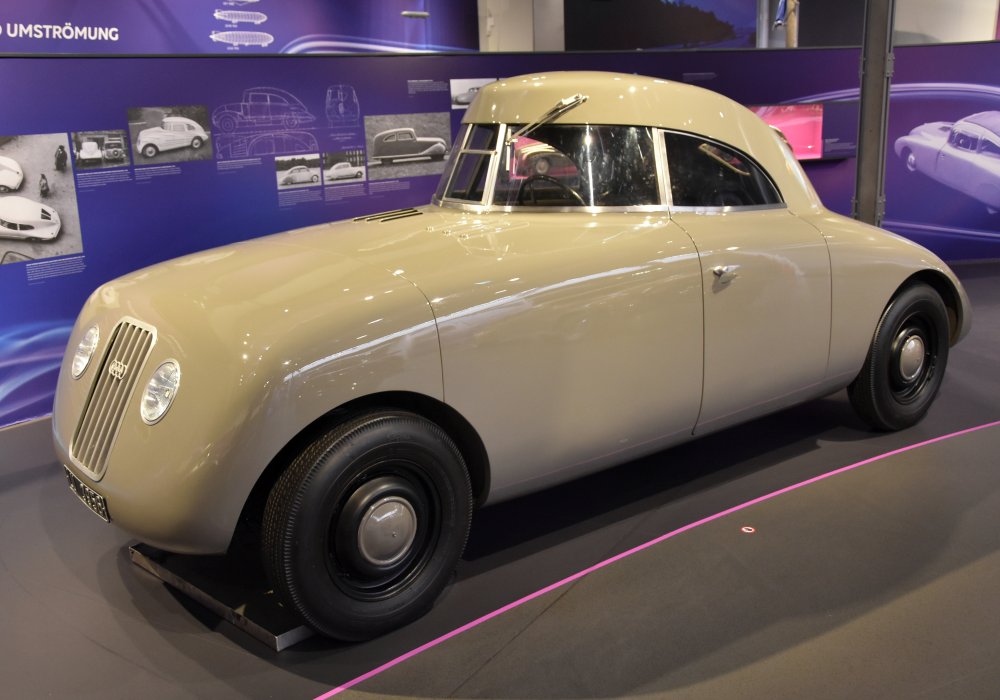In the early 1930s, European automakers pushed the boundaries of vehicle design. The continent’s roads became testing grounds for radical new approaches to automobile construction. This era marked a pivotal shift from traditional box-shaped vehicles to more sophisticated, wind-cheating forms.
The 1934 Audi Front UW Jaray emerged as a testament to this revolutionary period. This one-of-a-kind prototype challenged conventional wisdom about how cars should look and function. Its creation marked a watershed moment in automotive aerodynamics.
The Birth of Aerodynamic Innovation
The story begins with Paul Jaray’s groundbreaking patent from 1921. His teardrop-shaped design principles fundamentally transformed automotive aerodynamics. The Audi Front UW Jaray embodied these principles in metal and glass, creating a visual sensation that still captivates audiences today.
Engineers integrated cutting-edge features throughout the vehicle. The streamlined body reduced air resistance significantly compared to contemporary designs. The front-wheel-drive configuration allowed for a lower, more aerodynamic profile.
“Jaray’s work on the Audi Front UW represented the first serious attempt to apply aircraft aerodynamics to automobile design,” notes Dr. Marcus Weber, Automotive History Professor at Technical University Munich. “His patents influenced vehicle design for decades to come.”
The development team focused obsessively on reducing drag. Every curve and contour served a purpose, making the Audi Front UW Jaray one of the most efficient vehicles of its time.
Historical Reference!
Paul Jaray's aerodynamic patents were first developed through his work on zeppelin airships. He later applied these principles to automobiles, revolutionizing automotive design.
Engineering Marvel Under the Hood
The heart of the Audi Front UW Jaray beat with remarkable precision. Its 1,963cc inline-six engine delivered 40 horsepower through an advanced front-wheel-drive system. This powertrain configuration was notably progressive for 1934.
Key technical achievements include:
- revolutionary front-wheel-drive layout;
- fuel efficiency of 12-14 liters per 100 kilometers;
- top speed of 130 kilometers per hour;
- aerodynamically optimized body reducing drag coefficient.
The engineering team achieved remarkable performance metrics through their innovative approach. The combination of aerodynamic efficiency and mechanical refinement resulted in a vehicle that could maintain high cruising speeds while consuming less fuel than its contemporaries.
Design Revolution
The Audi Front UW Jaray’s body design broke every convention of its era. Its teardrop shape and integrated spare wheels created an uninterrupted flow of air around the vehicle. The smooth transitions between surfaces minimized turbulence and drag.
“The integration of the spare wheels into the body was revolutionary,” explains Sarah Chen, Automotive Design Historian. “This detail alone shows how far ahead of its time the Jaray prototype truly was.”
Fact!
The Audi Front UW Jaray achieved a drag coefficient significantly lower than typical cars of the 1930s, which averaged around 0.7 to 0.9 Cd.
Innovation extended to every aspect of the design. The rounded front end, sloping roofline, and subtle tail fins worked together to manage airflow efficiently. These features would become common decades later.
Legacy and Influence
Though only one example was built, the Audi Front UW Jaray’s influence resonates through automotive history. Its aerodynamic principles informed generations of vehicle designs. Modern wind tunnels still validate many of Jaray’s original insights.
The car’s legacy lives on through detailed scale models and historical documentation. Collectors and enthusiasts recognize it as a pivotal moment in automotive evolution. Its innovative spirit continues to inspire contemporary designers and engineers.
Shaping Tomorrow: Lessons from a Pioneer
The Audi Front UW Jaray demonstrates how visionary thinking can transcend its era. Modern automakers still grapple with the same challenges of aerodynamic efficiency and performance that this prototype addressed in 1934.
Today’s electric vehicles owe a debt to this pioneering design. As we push toward more efficient transportation, the principles explored by the Audi Front UW Jaray remain remarkably relevant.
Pros and Cons
| Advantages | Disadvantages |
|---|---|
| Revolutionary aerodynamic design reducing drag | Limited production (single prototype) |
| Advanced front-wheel-drive system | Experimental nature affected reliability |
| Impressive fuel efficiency for its era | Complex body construction increased costs |
| Innovative integration of spare wheels | Limited interior space due to streamlined design |
| Groundbreaking engineering principles | Challenging maintenance due to unique components |
| Historical significance in automotive design | Limited parts availability |
| Influence on future vehicle development | Restricted practical application of design elements |
The Audi Front UW Jaray stands as a testament to innovative engineering and bold design thinking. While its experimental nature limited its immediate practical impact, its influence on automotive aerodynamics proves immeasurable. This unique prototype demonstrates how pioneering concepts, though initially challenging to implement, can shape the future of an entire industry.

